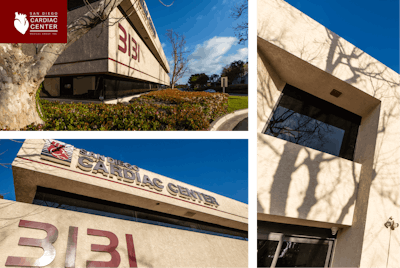Advances in heart treatments make it possible to repair a faulty heart mitral valve with minimally invasive treatment. Some patients are not safe to undergo a more invasive procedure and can achieve healthier heart function with TMVR, or “transcatheter mitral valve repair.”
What to Expect in Your MitraClip Procedure
The damaged mitral valve is accessed with a thin, flexible tube, or catheter, which is guided through your leg vein until it reaches the damaged valve. The small clip is then implanted to help the valve close as it should. MitraClip placement is a minimally invasive procedure that takes about one to three hours to complete and allows you to return home after only a few days in the hospital. You will notice that you feel stronger and better very quickly after this groundbreaking procedure.
If placing a MitraClip is determined to be the ideal option for you, at San Diego Cardiac Center, we will ensure you understand everything about the procedure and recovery, so you are confident and not anxious during the procedure. You will not experience any pain as you will have intravenous sedation or general anesthesia.



